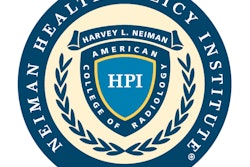The rules and requirements for success in the Medicare Quality Payment Program (QPP) are ever-changing, and it seems like each year brings a new challenge for practices to avoid a payment penalty or, hopefully, to earn a payment bonus.
 Erin Stephens.
Erin Stephens.
Most recently, CMS announced that the 2023 data submission deadline would be extended until April 15, 2024, due to the cyberattack at Change Healthcare in February, and that practices affected by the cyberattack could apply for an Extreme and Uncontrollable Circumstances (EUC) Exception. The EUC exception allows the applicant to request reweighting of any or all of the performance categories under the Merit-Based Incentive Payment System (MIPS).
While CMS has not specified the Change Healthcare cyberattack as a circumstance that would be acceptable for an EUC exception, some experts like McDermott+Consulting are reporting that it will qualify if it negatively impacted a provider’s ability to participate in MIPS in 2024 by preventing them “from collecting MIPS data for an extended period of time.”
Practices affected may consider completing the EUC application and choosing “Ransom/Malware” as the “Event Type” and confirming in the application that the ransom/malware event pertained to the Change Healthcare cyberattack. The EUC Exception application can be filed at any time during the year, until 8 p.m. ET on December 31, 2024.
Alternatives to traditional MIPS reporting
Practices reporting in 2024 must obtain a score of at least 75 points to avoid a payment penalty in 2026; scores between 75 and 100 points will earn a positive payment adjustment in 2026. For the 2022 performance year, the mean score nationwide was 82.9 points according to the CMS 2022 Quality Payment Program Experience Report.
Unfortunately, radiology clinicians have a limited number of measures to choose from, which interferes with their ability to obtain a high score. One way to improve the pool of measures is to use a Qualified Clinical Data Registry (QCDR). A QCDR is operated by a vendor approved by CMS, often sponsored by specialty societies such as the American College of Radiology (ACR). QCDR submission differs from the usual MIPS-qualified registry submission in that QCDRs can submit non-MIPS measures, called QCDR measures, as well as MIPS quality measures.
Advantages for small practices
Because QCDRs charge a fee, they might be more suited to larger practices. Small practices, defined as those having 15 or fewer eligible clinicians billing under the same Taxpayer ID Number (TIN), have special advantages under the MIPS framework that can help them achieve a bonus without using a QCDR. The advantages of small practices include the following:
- The ability to submit MIPS quality measures through claims reporting
- Three (3) points are awarded for submitting:
o Quality measures without an available benchmark
o Quality measures that do not meet case minimum or data completeness requirements
- Six (6) bonus points added to the quality performance category score for clinicians who submit at least 1 measure, either individually or as a group or virtual group.
- Automatic reweighting of the Promoting Interoperability performance category to 0%, without the need to apply for a hardship exception.
- Full credit in the Improvement Activities performance category for performing and attesting to either one high-weighted activity or two medium-weighted activities.
Possible new quality measures
CMS began a testing stage for mammography measures that were created by Acumen, a policy research company with a focus on healthcare, in February 2024. The testing stage signifies an important first step toward official inclusion into the MIPS Quality Measures available for practices to report.
In MIPS performance year 2024, there are no traditional MIPS measures for mammography. While the ACR-supported measure QMM18 (Use of Breast Cancer Risk Score on Mammography) is available for practices, it has no current benchmark.
The ACR reported that the following three outcome-related quality measures may become available for radiology groups to report on in the future:
- Breast Cancer Screening Recall Rate Quality Measure (Outcome)
- Breast Cancer Screening with an Eventual Breast Cancer Diagnosis: Positive Predictive Value 1 (PPV1) Quality Measure (Outcome)
- Use of Biopsy After Diagnostic Follow-up with Eventual Breast Cancer Diagnosis: Positive Predictive Value 3 (PPV3) Quality Measure (Outcome)
According to the Quality and Safety Department of the ACR, the earliest that these proposed mammography measures will be finalized into MIPS and available for usage would be the 2026 performance year. We will not know until late 2024 whether or not the new measures were submitted to CMS.
Conclusion
With the Medicare Physician Fee Schedule constantly under the threat of annual reductions or small increases that do not keep up with inflation, avoiding a payment penalty for not fulfilling the minimum MIPS requirements is crucial. Practices must annually review the changes to the program and take advantage of any opportunity to improve their score.
Erin Stephens is senior client manager, education at Healthcare Administrative Partners.
The comments and observations expressed are those of the author and do not necessarily reflect the opinions of AuntMinnie.com.



















